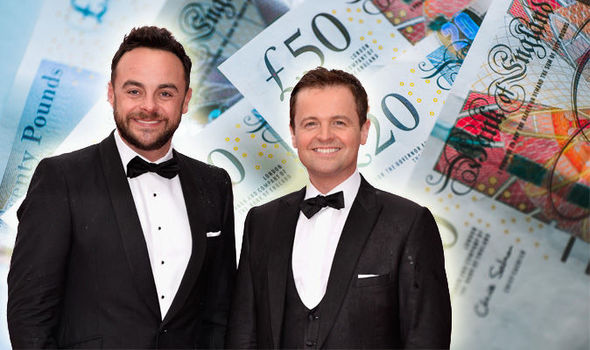Image Credit: GetyImage
The art of dance is as diverse and complex as the cultures and individuals it represents, embodying a vast spectrum of types of dance that transcend borders and languages. From the rhythmic steps of ballroom to the expressive movements of hip-hop, dance offers a universal language of expression and connection. Exploring the different types of dancing not only enriches our understanding of cultural heritage but also highlights the incredible versatility of human expression through movement. Whether seeking dance classes near me or simply looking to understand more about the various dance styles, one finds that the world of dance is endlessly fascinating and remarkably diverse.
This article delves into the rich variety of dance, covering major categories such as ballroom dance, professional performance dance, hip-hop & funk, and traditional and folk dances. Each section offers insights into the distinct characteristics that define these styles of dance, from the intricate footwork and partner dynamics of ballroom dancing to the vibrant energy and storytelling of folk dances. By exploring the dance styles popular worldwide, readers will gain an appreciation for the artistry and skill involved in different types of dancing, including the ever-evolving genres of types of hip hop dance. Join us on this rhythmic journey as we uncover the amazing diversity and beauty of dance across the globe.
Ballroom Dance
Ballroom dance, a graceful and structured dance form, encompasses a variety of styles each with unique characteristics and origins. Among the prominent styles are the Waltz, Viennese Waltz, Cha-Cha, Tango, Rumba, Samba, Mambo, Quickstep, and Jive, each offering a distinct rhythm and dance technique that reflects its cultural background.
Waltz
Originating in the 16th century from Austria and Bavaria, the Waltz is known for its flowing movements and 3/4 time signature. It emphasizes a rise and fall motion, providing a smooth and gliding dance experience.
Viennese Waltz
A faster variant of the Waltz, the Viennese Waltz emerged in Vienna with a quicker tempo and continuous turning, making it both challenging and exhilarating.
Cha-Cha
Developed in Cuba in the 1950s, the Cha-Cha is recognized by its energetic rhythm and distinctive cha-cha-cha triple step, blending the excitement of its dance moves with a vibrant beat.
Tango
The Tango, born in the lower-class districts of Buenos Aires in the late 19th century, is dramatic and passionate, characterized by sharp movements and a strong connection between partners.
Rumba
Known as the dance of love, Rumba originated in Cuba with slow, sensuous movements emphasizing hip action, making it a favorite in both social and competitive dancing scenes.
Samba
This lively Brazilian dance incorporates rhythmic bouncing movements, making it vibrant and playful. It reflects the festive spirit of Brazilian culture and is a staple in ballroom competitions.
Mambo
Mambo, which originated in Cuba in the 1930s, features a mixture of Afro-Cuban rhythms and was popularized by musicians like Perez Prado. It is known for its energetic steps and rhythmic complexity.
Quickstep
Emerging in the 1920s, the Quickstep is fast-paced and joyful, characterized by light, quick steps that make it both challenging and delightful to dance.
Jive
An evolution of various swing dances, Jive is lively with a fast tempo and is performed with lots of kicks and flicks, making it a spirited and engaging dance.
Each of these styles contributes uniquely to the rich tapestry of ballroom dancing, offering diverse ways for dancers to express themselves through movement and rhythm.
Professional Performance Dance
Professional Performance Dance encompasses a variety of styles, each with unique characteristics and rich histories. Ballet, originating in the royal courts of Europe during the Renaissance, is known for its technical precision and graceful movements. Contemporary Dance, emerging in the mid-20th century, focuses on emotional expression and breaks from classical ballet’s rigidity. Modern Dance, born from a rebellion against ballet’s strict forms, emphasizes natural movement and personal expression. Tap Dance, developed in the United States, combines rhythmic footwork with improvisational elements, making it a percussive and dynamic performance style. Each style contributes uniquely to the professional dance scene, highlighting different aspects of human emotion and physical skill.
Hip-Hop & Funk Dance
Hip-Hop & Funk Dance encompasses a variety of energetic and expressive styles, each with unique origins and techniques. Key styles include Breakdance, Locking, Popping, and Electric Boogaloo, all contributing to the vibrant landscape of street dance.
Breakdance
Originating in the hip-hop culture of the 1970s, Breakdance features athletic moves such as top rocks, down rocks, power moves, and freezes. Dancers, known as b-boys and b-girls, showcase their style in battles, emphasizing originality and skill.
Locking
Developed by Don Campbell in the late 1960s, Locking is characterized by quick, sharp movements followed by a brief freeze or “lock.” This style is performance-oriented, often involving interactions with the audience and humorous expressions.
Popping
Popping emerged in the 1970s, distinguished by the rapid contraction and relaxation of muscles to create a jerking effect. This style incorporates techniques like waving, gliding, and tutting, often performed to funk music.
Electric Boogaloo
This style evolved from the Boogaloo movement in Oakland, combining elements of popping with fluid motions. Created by Boogaloo Sam, Electric Boogaloo is known for its smooth style and rhythmic body movements, making it a distinct form within the funk dance genre.
Each of these styles showcases the creativity and cultural diversity within Hip-Hop & Funk Dance, reflecting its rich history and ongoing evolution.
Traditional and Folk Dances
Folk Dance encapsulates a variety of traditional dances that often reflect the cultural heritage and history of a region. These dances are typically passed down through generations, each retaining a unique aspect of its origin story. For instance, Flamenco in Spain merges intricate footwork with expressive arm movements, deeply rooted in the cultural interplay of Andalusian, Islamic, Sephardic, and Gypsy influences.
Belly Dance, originating from the Middle East and North Africa, emphasizes complex torso and hip movements. It has evolved significantly, influenced by various cultural interactions over centuries, and is celebrated for its expressive and fluid motion that often portrays a story or emotion.
Flamenco, recognized by UNESCO, is not just a dance but a profound cultural expression from Spain, involving guitar playing, singing, and rhythmic clapping alongside the dance. It’s known for its intense emotional delivery and intricate technical skills, making it a powerful performance art.
Polka, initially from Bohemia, has become beloved worldwide. Distinguished by its lively steps and quick tempo, it offers a spirited dance experience that has adapted into various styles across different cultures, maintaining its popularity in social and formal settings alike.
Country/Western Dances from the United States incorporate a range of dance styles like the Two Step and Square Dance, deeply embedded in American country and western traditions. These dances highlight a communal spirit and are often accompanied by country music, reflecting the social and historical narrative of the American people.
Conclusion
Through this exploration of global dance styles, we have traversed the vast and vibrant landscape of dance, encountering the elegance of ballroom, the expressive power of professional performance dance, the dynamic energy of hip-hop and funk, and the rich cultural tapestry of traditional and folk dances. Each style, from the poised waltz to the spirited flamenco and the storytelling bellows of belly dance, exemplifies not just the diversity of human expression but also the profound ways in which dance can connect us across cultural boundaries and historical epochs.
As we reflect on the myriad ways dance manifests around the world, it becomes clear that dance is more than an art form; it is a language of the soul that transcends words. This journey through dance styles not only broadens our appreciation for the artistry and skill involved in each form but also invites us to recognize the universal power of dance to convey emotion, tell stories, and bring people together. May this exploration inspire further inquiry and participation in the world of dance, prompting us to embrace our own movements in the endless dance of human expression and connection.
FAQs
1. What are the top 10 most popular dance styles globally? The world’s most popular dance styles, reflecting diverse cultural influences and historical development, include Ballet, Tap Dance, Hip Hop, Bharatnatyam, Salsa, Ballroom, Contemporary, Breakdancing, Jazz, and Kathak. These styles vary widely in their techniques, origins, and global appeal.
2. How many different genres of dance exist worldwide? There are hundreds of dance styles globally. However, for ease of categorization, these can be broadly grouped into several major categories: ballet; modern and contemporary dance; hip-hop or street dance; Latin, ballroom, and social dance; and folk dance. It’s common for dance styles to blend elements from multiple genres.
3. What is the most iconic dance move known around the world? The Moonwalk is arguably the most iconic dance move globally. Popularized by Michael Jackson, it involves the illusion of walking forwards while the dancer moves backwards. This move has become one of the most recognized and emulated dance moves worldwide.




